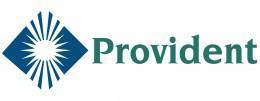2019 and Beyond: Perspectives of 15 Urgent Care Leaders
2019 and Beyond: Perspectives of 15 Urgent Care Leaders
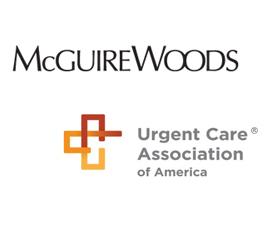 The urgent care industry is a diverse playing field where innovative leaders have built successful urgent care models to address the expansive demand for convenient, cost-efficient and patient-driven care. While urgent care’s growth across the country may face headwinds from government regulation and private payors in 2019 and beyond, urgent care will remain a hot area for growth, private investment and M&A activity.
The urgent care industry is a diverse playing field where innovative leaders have built successful urgent care models to address the expansive demand for convenient, cost-efficient and patient-driven care. While urgent care’s growth across the country may face headwinds from government regulation and private payors in 2019 and beyond, urgent care will remain a hot area for growth, private investment and M&A activity.
According to the Urgent Care Association of America (UCAOA), 85 percent of urgent care centers expected an increase in the number of patient visits in 2012, while nearly 40 percent of such centers sought to either expand current facilities or add additional locations. Hospitals, health systems, corporate chains, franchises and independent entrepreneurs will continue to seek growth and partnership opportunities. The industry’s success should be sustainable in the future as its seasoned leaders have the necessary operational experience and foresight to fill an unmet need for urgent care in the post-Affordable Care Act healthcare system.
This white paper is intended to provide information of general interest to the public and is not intended to offer legal advice about specific situations or problems. McGuireWoods does not intend to create an attorney-client relationship by offering this information, and anyone’s review of the information shall not be deemed to create such a relationship. You should consult a lawyer if you have a legal matter requiring attention. The insights provided by each leader in this white paper are the personal opinions of such leader and are not attributed to their companies and associations, the authors or McGuireWoods.
| GEOFFREY COCKRELL, PARTNER 312.849.8272 | gcockrell@mcguirewoods.com 77 West Wacker Drive Suite 4100 Chicago, IL 60601-1818 | BARTON C. WALKER, PARTNER 704.373.8923 | bwalker@mcguirewoods.com Fifth Third Center 201 North Tryon Street Suite 3000 Charlotte, NC 28202 | JOHN C. SARAN, ASSOCIATE 312.849.8166 | jsaran@mcguirewoods.com 77 West Wacker Drive Suite 4100 Chicago, IL 60601-1818 |
March 20, 2014 www.mcguirewoods.com
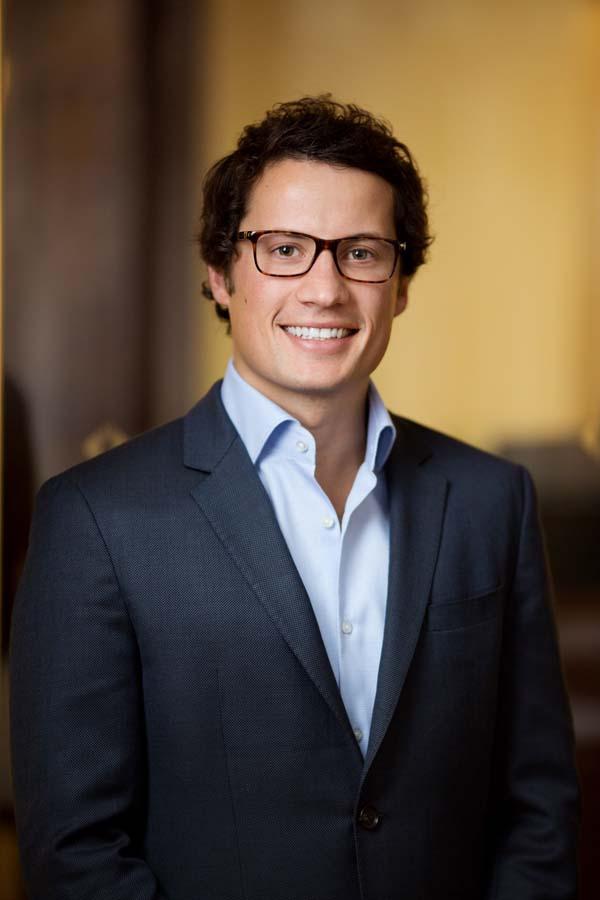 Name: Steven Aguiar
Name: Steven Aguiar
Title: Managing Director
Company: Provident Healthcare Partners, LLC
Address: 260 Franklin Street, 16th Floor, Boston, MA 02110
Steven Aguiar is a director at Provident Healthcare Partners. Provident Healthcare Partners is a leading investment banking firm focused on providing services to middle-market and growth-oriented healthcare services companies. Provident Healthcare Partners’ services include mergers and acquisitions, strategic and advisory planning, and capital formation. Mr. Aguiar develops relationships with urgent care consolidators and investors throughout the country to better understand the demand for urgent care practices. Mr. Aguiar utilizes this information from investors and consolidators to market Provident’s clients to the most interested and qualified parties. Prior to Provident Healthcare Partners, Mr. Aguiar worked in the private equity space exclusively focused on healthcare services.
Urgent Care Insights:
The urgent care industry will continue to be a hotbed of deal activity over the next five years as the various financial and strategic partners compete to establish a strong geographical presence and larger market share. As more investors deploy capital into the space and early investors begin to realize the gains on their investments, the industry will become more saturated and subject to pricing pressure. Even with increased rate pressure, the urgent care sector will continue to be an attractive sector, as it is the lowest cost setting for payors and one of the most convenient alternatives for patients. Similarly, the demand for urgent care services should increase as patients become more familiar and comfortable with this alternate care setting. Brand recognition and regional density will be crucial as competition increases.
Additionally, freestanding emergency departments, which were once considered a catastrophic threat to urgent care, have not proved to be so, due to the higher costs to both patients and payors. With this reduced competitive risk, minimal barriers to entry, and low startup costs, investors have the opportunity to aggregate a regional platform of centers with strong outside management teams. These investors could then make a relatively early exit with double-digit multiples of EBITDA in 12 to 24 months if they can build chains of 15+ clinics.
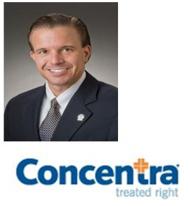 Name: Alan Ayers
Name: Alan Ayers
Title: Vice President of Market Development
Company: Concentra
Address: 5080 Spectrum Drive, Suite
1200W, Addison, TX 75001
Phone: 214.538.8432
Email: Alan_Ayers@concentra.com
Alan Ayers is Vice President of Market Development for Concentra where he focuses on revenue growth of clinic-based urgent care, occupational health, primary care and medical specialist services. His areas of expertise include market planning and integration, capital requirements, real estate site selection, consumer-targeted marketing, and programs to measure and improve the patient experience. Because of Mr. Ayers’ industry experience and incredible insight to the national market, he serves as a Board Director and Practice Management Content Adviser for UCAOA. Mr. Ayers also serves as a column contributor for UCAOA’s Urgent Care Access newsletter and as Practice Management Editor of The Journal of Urgent Care Medicine (JUCM). Concentra is a subsidiary of Humana, Inc. See Ted Bucknam for more information on Concentra.
Urgent Care Insights:
Urgent care is a consumer-driven phenomenon that fits well in the 21st century with its emphasis on delivering greater convenience, accessibility, hours and service—at a lower cost—than emergency rooms and other health care options. As more consumers obtain insurance through the Affordable Care Act and become aware of the benefits of urgent care, urgent care visits will continue to exponentially increase. Up to this point, urgent care growth has mostly occurred in the Midwestern and Sunbelt states due to the high saturation of hospitals and established of primary care in the Northeast. This trend will begin to change as hospitals and entrepreneurs see opportunity in historically underserved areas and as payors begin to recognize urgent care’s cost-savings and role in the healthcare delivery system. Furthermore, multi-site operators will focus on increasing market shares in strategic markets to build operational efficiencies and marketing scale. As expansion plans become more targeted, acquisition candidates in the precise locations desired will become increasingly rare so these companies may look toward the de novo model, since barriers to entry in most markets are minimal and it avoids the cultural and management integration hurdles that come with acquisition. One challenge these new centers will face is that they will need to help their patients navigate insurance deductibles, co-pays and direct care costs. Thus, urgent care centers should focus on proper training and procedures for staff to help patients understand their benefits and manage their care costs upfront. Overall, expect to see a lot of activity through 2019 and beyond, as even some large metropolitan areas could support two to three times the number of current urgent care providers.
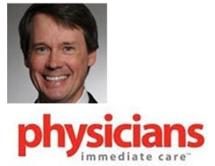 Name: Stan Blaylock
Name: Stan Blaylock
Title: Chief Executive Officer
Company: Physicians Immediate Care
Address: 9701 W. Higgins Road, Suite 270,
Rosemont, IL 60018
Phone: 847.692.3715
Email: stanblaylock@visitphysicians.com
Stanley Blaylock is the chief executive officer of Physicians Immediate Care. Mr. Blaylock brought 15 years of healthcare experience to Physicians Immediate Care that included senior executive positions at Walgreens Co. Mr. Blaylock also spent several of those years in investment banking including overseeing healthcare investment for Deutsche Bank Alex Brown & Sons and founding Medmark, which was subsequently acquired by Walgreens Specialty Pharmacy. Physicians Immediate Care is an urgent care and occupational health leader in the Midwest with more than 20 locations covering three states. Since fall 2013, Physician Immediate Care has opened a new clinic nearly every month.
Urgent Care Insights:
Urgent care in the last year and a half has seen operators rush to gain market share, causing substantial private equity buzz and a diverse operator landscape. Urgent care green space is becoming a rare occurrence and smaller platforms are becoming prime targets for investment. Most consolidation and transactions will shake out in the next three to five years. In 2019 and beyond, there will be fewer key players in the urgent care industry mostly consisting of large regional chains of urgent care centers. Hospital joint ventures will also become more popular as hospital administrators recognize that it is cheaper to shift low-risk patients to levels of care with lower overhead costs. Further, payors and self-insured employers will begin to advocate for patients to choose urgent care for the point of care for non-life-threatening situations rather than expensive emergency departments.
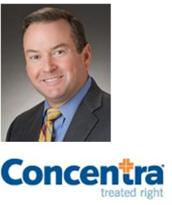 Name: Ted Bucknam
Name: Ted Bucknam
Title: President
Company: Concentra
Address: 5080 Spectrum Drive, Suite
1200W, Addison, TX 75001
Phone: 972.364.8000
Email: Ted_Bucknam@concentra.com
Ted Bucknam is the president of Concentra after having served as chief operating officer in various essential management and operational roles at Concentra over the past 20 years. Prior to joining Concentra, Mr. Bucknam worked for Medicus Systems Corporation handling investor relations, product management and sales. Concentra operates more than 300 freestanding medical facilities in 39 states. At their clinics, 1,000 physicians along with other medical professionals treat more than 30,000 patients per day. In 2010-2011, Concentra became a subsidiary of Humana, Inc., for $790 million. Concentra assists Humana with managing medical costs and reaching new service lines.
Urgent Care Insights:
The urgent care industry will continue to expand over the next few years, but growth will be localized. Individual market expansion will depend on competition, reimbursement challenges and patient demographics. Some markets have fewer barriers to entry than others where urgent care operators are firmly entrenched and opening new centers no longer becomes a financially viable action. The majority of market entrants are practitioners who set up one to three facilities and call themselves urgent care. With low overhead and fairly easy operations, these small operators can flourish. However, once they become a regional player, many of these urgent care operators have not been able to figure out the next big step in expansion or how to take advantage of economies of scale. Other players over¬expanded and had to retract their operations due to integration and profitability concerns. Urgent care operators should thus adopt both a de novo and an acquisition strategy whereby they focus on opportunities to better serve the communities and areas where they already have a presence, while keeping an open mind for profitable acquisition targets. Similarly, urgent care operators can benefit from building relationships with payors and health systems since both can provide a steady stream of patients, while payors can teach the operators about the full insurance membership experience. Urgent care providers would not need to worry about becoming out-of-network with other payors if they affiliated or partnered with a specific payor so long as they continued to provide value for the other payors’ members. Further, payors, health systems and patients will come to expect that all urgent care providers utilize electronic medical records and eventually have an effective way to communicate and exchange that information. While most urgent care operators have electronic medical record systems in place, smaller urgent care operators will not be able to meet the high IT capital and implementation costs, likely creating a future barrier to entry. Smaller operators will also not be able to cover the ebbs and flows of future patient demand as overhead costs get higher and revenue streams slimmer. Thus, the key survival decision for urgent care operators wanting to stay in business past 2019 will be which larger organization they will choose to affiliate or partner with.
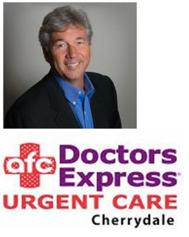 Name: Brad Childs
Name: Brad Childs
Title: Chief Executive Officer
Company: Doctors Express Cherrydale
Address: 3213 N. Pleasantburg Drive, Suite
E-2, Greenville, SC 29609
Phone: 864.467.2005
Email: BChilds@DoctorsExpress.com
Brad Childs is the chief executive officer of Doctors Express Cherrydale. Before running his own urgent care center, Mr. Childs worked in real estate for nearly 20 years and was the broker-in-charge with the Cliffs Communities. Doctors Express Cherrydale opened on Dec. 1, 2012, as a franchisee with Doctors Express, now part of American Family Care. Doctors Express Cherrydale utilizes only board-certified physicians to treat patients for mostly seasonal illnesses and broken bones, while also providing occupational health services. Mr. Childs plans to increase the number of urgent care locations affiliated with Doctors Express Cherrydale to five by 2019.
Urgent Care Insights:
Urgent care meets the patient where they want to be met in terms of quick, efficient, high-quality healthcare. Patient demographics have not changed much in recent times even though experts thought there would be floods of newly-insured. Operations will change with the shift to ICD-10. Urgent care centers will need to see more patients while being reimbursed less for their services. Similarly, urgent care operators face some challenges with convincing commercial payors of the benefits of urgent care and that urgent care should be reimbursed at a higher rate than standard primary care private practices. Urgent care centers are often the front lines of patient frustrations with the complexity of their health insurance and having to pay out of pocket for their healthcare. However, with high-deductible plans becoming the norm, urgent care visits will present a much more affordable option than a hospital’s outpatient or emergency department services. Some hospitals and health systems have realized this trend and thus are investing in urgent care, many times incorporating them into medical buildings as a feeder for adjacent specialist services. By 2019, technology will have outgrown brick-and-mortar locations, so that urgent care providers will need to think of innovative ways to get the physicians to treat the patient in the marketplace such as through the use of electronic devices and video telehealth, while consolidating centers of high overhead costs to a few select locations. Furthermore, downward pressure from government and commercial reimbursement cuts will make it impossible in 2019 and beyond to have a four- to five-thousand-square-foot facility on every corner of a shopping mall.
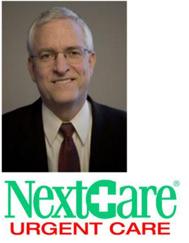 Name: Donald Dillahunty, D.O.
Name: Donald Dillahunty, D.O.
Title: Area Medical Director
Company: NextCare
Address: 2550 N. Thunderbird Circle
Suite 303, Mesa, AZ 85215
Phone: 214.572.1124
Email: donalddillahunty@nextcare.com
Dr. Don Dillahunty is an area medical director for NextCare Urgent Care. Prior to this role, Dr. Dillahunty was the founder and chief executive officer of PrimaCare, which operates 11 center locations in the Dallas/Fort Worth area. On Aug. 1, 2013, NextCare acquired PrimaCare’s 11 Dallas/Fort Worth locations, bringing NextCare’s total number of clinics to 86 at the time. The company currently operates 101 centers across eight states. Dr. Dillahunty currently serves on the board of directors of the Urgent Care Association of America (UCAOA) and previously served as its president for two years. As a family physician and as an owner/operator, he has been involved with the urgent care industry for over 20 years.
Urgent Care Insights:
The urgent care industry will continue to show growth in the coming years, as the demand for primary care services increases and the shortage of primary care physicians continues to be an issue for the healthcare system. Although most urgent care operators have focused on urban and suburban sites, an overlooked area for growth may be in rural areas. In rural areas, urgent care tends to be more primary care-focused with extended hours and greater walk-in capability than those clinics operating more as an emergency room. Further, patients who pay for urgent care often do not experience the same kind of sticker shock that patients of hospital emergency departments experience for routine or lower acuity procedures. Urgent care centers do not need to pass down high overhead costs to patients as emergency departments do. However, investors might be hesitant to push into new rural markets without proven returns and as a result may not be the drivers of growth in rural areas.
I believe the next few years will see private equity groups begin to make exits from their initial urgent care investments. This movement might cause the industry’s players to shift from private equity-backed urgent care operators to operators backed by large health systems and payors. Payors in particular will want greater control over cost containment in the delivery of urgent and primary care to their beneficiaries. This move will be in line with the basic premise that to survive in the future, providers must build regional operations by consolidation and partnerships. Unfortunately, most of the mid¬size urgent care operator platforms have been bought up by the top 10 to 15 urgent care networks. Companies looking for acquisition growth must now comb markets and pay a premium for one- to six-center chains. Buyers are willing to pay a premium because an established platform and brand tends to drive revenue growth and ease integration. Similarly, investors prefer an established, profit-oriented platform over a de novo model, which requires extensive investment and an effective management team before returns on investments can be significant.
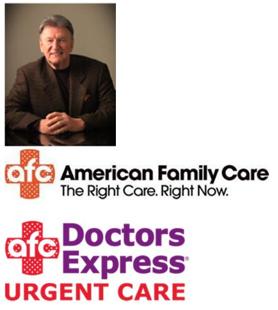 Name: D. Bruce Irwin, M.D.
Name: D. Bruce Irwin, M.D.
Title: Founder and Chief Executive Officer
Company: American Family Care &
Doctors Express
Address: 2147 Riverchase Office Road,
Birmingham, AL 35244
Phone: 205.403.8902
Email: CEODBI@AMERICANFAMILYCARE.com
Dr. Bruce Irwin is the founder, current chief executive officer and sole owner of American Family Care. Dr. Irwin has been in the business of urgent care for 32 years and opened his first healthcare center in 1982. Dr. Irwin combined his experience in family practice, occupational medicine and emergency care with an aggressive, well-planned business model to build the second-largest privately owned urgent care operator without the help of private investment. By the end of 2014, American Family Care will operate more than 160 facilities in 26 states. American Family Care offers a unique model because it owns the land where facilities are built, and its facilities provide pharmacies, general surgery services and weight loss programs. Similarly, patient care is completely physician-driven and nurse practitioners are used only sparingly. Dr. Irwin’s growth strategy included the acquisition of Doctors Express, the nation’s largest urgent care franchising business, in April 2013. Together American Family Care and Doctors Express now reach over a million patients across the United States.
Urgent Care Insights:
Urgent care has been a profitable business for nearly 35 years, but most payors, physicians and health systems did not understand the benefits of urgent care at first. Then a few years ago, a sleeping giant awoke and urgent care’s growth does not show signs of slowing down. Urgent care can be successful primary care so long as urgent care operators focus on creating a lasting patient relationship, whether it’s removing stitches or following up after an antibiotic program. However, future urgent care operators should not be hasty to enter the market and should rather invest the time to plan out their growth and operational strategies. Acquisitions can lead to footprints in new markets, but a freestanding center’s location can doom or make a particular center successful regardless of the quality of services. Similarly, urgent care operators should consider owning the land on which the center is built, to provide liquid assets for future investment opportunities. Regardless, the driving force behind all business plans should be the offering of excellent customer service by well-trained physicians and extender healthcare professionals.
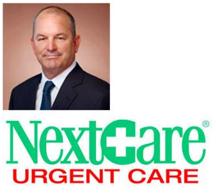 Name: John Julian
Name: John Julian
Title: Chief Executive Officer
Company: NextCare
Address: 2550 N. Thunderbird Circle, Suite
303, Mesa, AZ 85215
Phone: 480.924.8382
John Julian is the president and chief executive officer of NextCare Urgent Care, which operates 94 centers stretching over eight states. Mr. Julian has over two decades of experience in the healthcare industry, where he has managed urgent care, medical equipment, respiratory services, pharmaceutical and infusion therapy companies. Mr. Julian used his extensive merger and acquisition experience to oversee NextCare’s acquisition of PrimaCare’s 11 clinics, an affiliation with Integris Health’s nine clinics, and nearly 20 acquisitions of independent centers. NextCare’s owners, Enhanced Equity Fund, have implemented a rapid expansion strategy that saw 60 percent growth in the number of its centers in 2013 alone.
Urgent Care Insights:
Eighty percent of urgent care centers are physician-owned and have one to two locations. Thus, urgent care companies pursuing an acquisition strategy will need to spend a significant amount of time on integration when attempting to link together several independent centers. One key to successful integration is to have an experienced management team and to retain all of the clinical staff post-closing of the transaction. Similarly, maintaining relationships with payors will be important for urgent care providers, as nearly 70 percent of urgent care patients pay with commercial insurance. In general, urgent care provides a strong value proposition for cost-savings to payors and more money in the pockets of patients, who now have greater financial responsibility over the payment of medical expenses. Thus, urgent care providers should become active participants in payor networks, accountable care organizations and other risk-sharing models. The use of electronic health records further reduces costs by helping identify early-stage chronic conditions and effectively utilizing quality and patient metrics. Overall, urgent care will become the future medical home for a great percentage of folks requiring primary care services. The high demand for these services will be met by physician anchors working side-by-side with other highly qualified medical professionals.
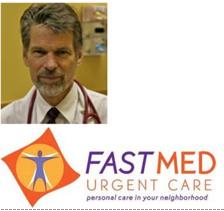 Name: Melvin G. Lee, M.D.
Name: Melvin G. Lee, M.D.
Title: Chief Medical Officer
Company: FastMed Urgent Care
Address: 935 Shotwell Road, Suite 108,
Clayton, NC 27520
Phone: 919.550.0821
Email: m.lee@fastmed.com
Dr. Melvin Lee is the chief medical officer at FastMed Urgent Care and has 26 years of experience in family practice, urgent and emergent care and occupational medicine. Dr. Lee has practiced at urgent care centers and served as a captain in the Canadian Navy. Prior to coming to his role at FastMed in 2007, Dr. Lee was the president of Metro-Memphis Physicians Group, which operated six urgent care clinics. FastMed started out as a single urgent care center in North Carolina nearly 13 years ago and has grown to 65 urgent care locations in North Carolina and Arizona. FastMed funded its growth using capital from both venture capital firms and Blue Cross Blue Shield of North Carolina. FastMed focuses on family medicine, occupational health and sports medicine services using a physician assistant model in clinics accredited by the Joint Commission.
Urgent Care Insights:
Urgent care operators should not focus on growth for growth’s sake. Rather, the quality of patient care services should be paramount, along with an acquisition target’s locations. While there are currently 9,000 clinics in the United States, there is still space for expansion since consolidation has not been widespread. Urgent care will always have a place in the system, as it fills a void between emergency rooms/higher acuity services and family practice. Similarly, growth will continue through 2019 and beyond because urgent care is suited to address the significant demand for low-cost treatment of non-life-threatening conditions such as flu, sinusitis, fractures, lacerations, infections, blood pressure issues and diabetic side effects. Ultimately, urgent care should not be viewed as a feeder to more expensive levels of care, as most nonprofits do. Urgent care should instead focus on making sure that quality services are provided to their patients to address their immediate needs.
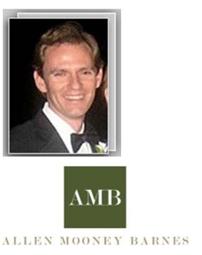 Name: Gordon Maner
Name: Gordon Maner
Title: Managing Partner
Company: Allen Mooney Barnes
Address: 171 Church Street, Suite 120C,
Charleston, SC 29401
Phone: 704.336.6818
Email: Gordon.Maner@ambwealth.com
Gordon Maner is a president at Allen, Mooney & Barnes and currently heads its investment banking division. Mr. Maner specializes in advisory and capital-raising services for mid-market companies looking for growth opportunities in the healthcare industry. Mr. Maner’s banking experience includes founding an investment banking firm, Plutus Capital Partners, and working as an investment banker at Susquehanna International Group and Midtown Partners. Mr. Maner’s vast deal experience in the urgent care space includes representation of PrimaCare Medical Centers in its transaction with NextCare and Physicians Immediate Care’s sale to WellPoint and LLR Partners, among several other urgent care deals. With the PrimaCare transaction, the company’s 11 urgent care center locations were a strategic solution for NextCare to gain market share in the Dallas/Fort Worth area, while benefitting from PrimaCare’s established brand and strong management team.
Urgent Care Insights:
The urgent care market will continue to see more transactions and consolidation in the coming three to four years. However, EBITDA multiples (i.e., valuations) may decline as the market becomes more saturated and speculation surrounding the Affordable Care Act becomes reality. Private equity investment opportunities in mid-level urgent care companies (10 to 15 centers) have significantly decreased due to the lack of availability of platform companies. Thus, transaction and investment focus will be at the mega-chain level or on independent centers, whereby an investment group could link together 10 to 15 centers to create a new regional player. Running parallel to this trend, more payors will follow Humana’s entrance into urgent care and seek to vertically integrate with the urgent care market in an attempt to steer their participants away from high-cost emergency departments and to urgent care. Evidence of this trend is UnitedHealthcare’s recent opening of three urgent care sites at the end of 2013. Ultimately, to survive in 2019 and beyond, urgent care companies will have to be larger and more consumer-driven to address increasing overhead costs, as compliance and standardization become barriers to entry. Synergies and cost-saving initiatives will be key for healthcare systems to compete with larger corporate urgent care chains.
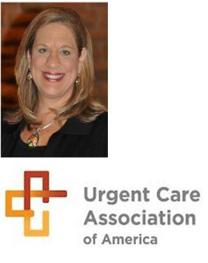 Name: P. Joanne Ray
Name: P. Joanne Ray
Title: Chief Executive Officer
Company: Urgent Care Association of America
Address: 387 Shuman Boulevard,
Suite 235W, Naperville, IL 60563
Phone: 877.698.2262
Email: jray@ucaoa.org
P. Joanne Ray is the chief executive officer of the UCAOA. Ms. Ray has over 30 years of experience in association management and development including several positions in the healthcare industry. Prior to running the UCAOA, Ms. Ray served as the executive director of the American Association of Cardiovascular and Pulmonary Rehabilitation, while working with SmithBucklin, the world’s largest association management company. The UCAOA is a nonprofit management association tasked with advancing the role of urgent care in the national healthcare system. The UCAOA has over 6,000 members representing over 2,600 clinics. The UCAOA offers educational programs, administrative resources and urgent care certification, but does not actually own or operate any urgent care centers.
Urgent Care Insights:
Our country currently suffers from a primary care physician shortage that cannot meet the demand for healthcare services. Private equity firms have responded by increasingly funding the development of urgent care centers in markets underserved by urgent care in an effort to make a profitable return on investment. Established urgent care operators have expanded their national footprints through organic and acquisition growth to not only cement a dominant position in a particular market, but also to gain payor leverage. Parallel to internal and external investment, hospitals and health systems have begun to expand their ambulatory care focus by investing in urgent care locations to capture new patients, provide referrals to more advanced levels of care and solidify provider relationships. Similarly, payors like UnitedHealthcare, Humana, Blue Cross Blue Shield and others view urgent care as a frontline point of network access and a way to reduce overhead costs by drawing patients away from costly emergency room visits. To remain profitable in 2019 and beyond, urgent care operators will need to respond to consumer needs by continually modifying their scope of services to provide more convenient, accessible, affordable and yet high-quality services.
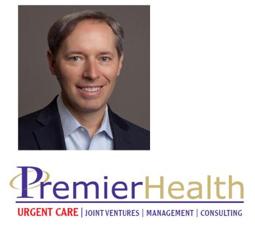 Name: Steve Sellars, M.B.A.
Name: Steve Sellars, M.B.A.
Title: Chief Executive Officer
Company: Premier Health
Address: 10319 Jefferson Highway, Baton Rouge,
LA 70809
Phone: 225.214.9352
Email: Steve@UrgentCareOpportunities.com
Steve Sellars is the CEO of Premier Health. Premier Health, which owns and manages a network of urgent care centers through several joint-venture relationships with hospitals and physicians. Premier Health also provides management and consulting services, guiding health systems and providers through the steps required to start up, manage and improve the overall efficiency of urgent care practices. Other services include urgent care operational assessments, turnaround plans and urgent care real estate development advisory services. Mr. Sellars offers more than 20 years of management experience in the healthcare industry, with stints in managed care and with one of the largest health systems in the Gulf South. Mr. Sellars’s expertise focuses on urgent care practice management, site selection and market expansion, managed care negotiations and strategic planning. Mr. Sellars currently serves on the board of directors for the UCAOA and takes an active role in education and membership outreach efforts.
Urgent Care Insights:
The urgent care model is designed to provide convenient access to quality, cost-effective healthcare services. Whether it’s retail, banking or healthcare services, families today want convenience and the urgent care model provides that convenience for accessing basic healthcare services. With the projected shortage of PCPs, the impact of overcrowded emergency departments, an aging population, health reform and the cost-savings that urgent care centers provide over other alternatives, there will certainly be more growth in the number of urgent care centers, but probably not at the same pace that we’ve experienced over the last five or six years. There are more health systems and payors getting into the urgent care business, and there is more consolidation among existing urgent care operators. The entrance of new players in the marketplace will provide unique opportunities for strategic partnerships. For example, our urgent care partnership model allows us to utilize the branding and market presence of an established health system to go along with our urgent care operational experience and expertise. This is advantageous in that synergies are created relative to meeting the healthcare delivery needs of alternative delivery models. Communication among healthcare providers will be critical in getting patients in the right setting as it relates to quality and cost. Such communication is facilitated by health information exchange and the adoption of electronic medical records. As urgent care operators grow, it will be very important to take advantage of efficiencies necessary to survive in the new healthcare environment. Further, urgent care operators should not face viable competition from freestanding emergency departments because studies show that a high percentage of emergency department visits could be handled in an urgent care setting. Thus, if a patient is faced with an average cost of $170 for an urgent care visit, or $970 for the average emergency department visit, the patient will learn to choose the more cost-effective option. Similarly, statistics show that 88 percent of urgent care patients are seen within an hour or less versus only 12 percent in an emergency department. More cost-effective visits and faster service times should allow urgent care to carve out its own niche in the healthcare industry in the next five years and beyond without encroachment by freestanding emergency departments.
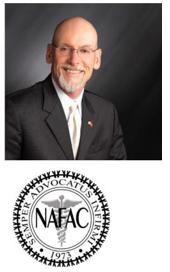 Name: William H. Wenmark
Name: William H. Wenmark
Title: President
Company: National Association for
Ambulatory Care
Address: 5396 Ashcroft Road, Minnetonka,
MN 55345
Phone: 612-840-8803
Email: health1@aol.com
Bill Wenmark is the president of the National Association for Ambulatory Care (NAFAC), established in 1973. Mr. Wenmark has published a “how-to” book on urgent care center development, called “Bill’s Book,” that provides business plans, lists of necessary equipment, coding information, workflow suggestions and the costs of supplies/support staff. Mr. Wenmark also created the national accreditation/certification standards for urgent care. Mr. Wenmark obtained his urgent care experience as the founder and former president of NOW Care Medical Centers, which he sold to North Memorial Medical Center in Minneapolis, MN, in 2008. At the time of sale, NOW Care Medical Centers operated seven urgent care facilities and eight centers in Cubs Foods locations. With over 40 years of leadership and experience, NAFAC has lead the industry in helping healthcare professionals open new convenience care and urgent care facilities and achieving NAFAC national accreditation/certification. NAFAC offers several educational resources including assistance with obtaining national accreditation/certification of facilities.
Urgent Care Insights:
The changes brought by the Affordable Care Act will be pivotal to the direction of urgent care’s becoming a “standard” for a model of convenient and affordable public health care. This care will be directed to 80 percent of the public who have medical conditions or injuries that will/can be resolved within 7 to 14 days and do not require long-term chronic care case management. With overhead costs exploding for private practice physicians, who medically manage these chronic conditions, alignment and employment with hospitals for the provision of primary care may become the norm. Urgent care provides a direct care practice model for physicians to separate themselves from hospitals and run their own lean, cost-effective, consumer-directed public health facilities. Hospitals will attempt to acquire urgent care centers, but they may face significant challenges since they are new to these retail enterprises, which require an entrepreneurial mindset to make quick operational and personal adjustments to stay profitable. Similarly, while some patients will have insurance, there will be higher deductibles, meaning that patients will have to pay more out of pocket. Thus, urgent care centers should focus on their customer-service, patient-intake procedure and offer discounts for paying cash. Moreover, younger patients will expect a quick, easy and affordable experience, and will not tolerate inefficiencies or bureaucratic red tape in receiving their care. To survive in 2019 and beyond, independent urgent care operators/organizations will have to be completely consumer driven and be more agile to deal with evolving consumer trends.
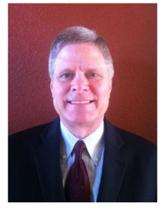 Name: Norman Winland
Name: Norman Winland
Title: Urgent Care Consultant
Address: 4404 Risinghill Drive,
Plano, TX 75024
Phone: 972.977.4955
Email: winland@verizon.net
Norman Winland is an urgent care consultant helping urgent care organizations’ operators maximize their operational efficiencies and improve patient care. Mr. Winland’s experience in urgent care spans over 22 years in managing operations and driving revenue growth. Most recently, he served as the chief operating officer of PrimaCare. Prior to that position, Mr. Winland was the vice president of CareNow for 15 years. CareNow is another operator in the Dallas/Fort Worth area with 23 locations. In addition, Mr. Winland served as director of Urgent Care Operations with Tenet Healthcare on a new strategy to install urgent care centers in the hospital’s service area to extend the hospital’s influence and reach into the community.
Urgent Care Insights:
With over 9,000+ centers throughout the country, urgent care is rapidly expanding to meet immediate patient demand. The 21st century mentality is that everything must be done as soon as possible. So when a patient decides to seek medical care, they take immediate action and prefer convenience over waiting for an appointment. Urgent care operators have caught on to this demand and have oversaturated many of the metropolitan areas, such as Dallas. While there are some opportunities left in major markets, continued growth in urgent care will be mostly localized in secondary and rural areas that do not have well-entrenched healthcare providers. There urgent care operators must take a different approach to marketing and building patient relationships. Urgent care facilities must integrate into small communities through outreach efforts and involvement in local events, while being seen by potential patients as charitable healthcare enterprises. Marketing campaigns will be crucial to this integration, but may require a broader net sometimes within a 30- to 50-mile radius of a center’s location. While freestanding emergency rooms might provide competition for patients, their services come at a much higher price point. Urgent care’s affordability and convenience are appreciated more and will continue to drive the expansion of the industry. However, these urgent care operators may run the risk of stagnant operations without the green space to grow their businesses. It also may prove difficult to attract high-quality physicians and other healthcare professionals to secondary and rural areas. Overall, urgent care operators require effective management teams to handle the daily affairs of multiple clinic chains. These teams may run into operational barriers and inefficiencies as the number of clinics increases. There are differences in the type and magnitude of issues facing a three- to five-clinic chain versus a chain that has over 10 centers. The survival of smaller to mid-size urgent care operators looking to grow will hinge on whether management can adapt to new challenges. Several of these urgent care organizations often bring in outside knowledge and resources to help them face a changing healthcare landscape.
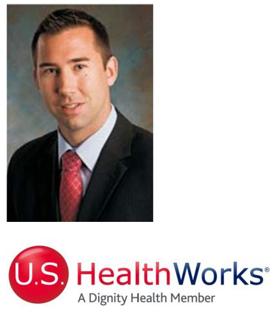 Name: Scott Witter
Name: Scott Witter
Title: Director of Business Development
Company: U.S. HealthWorks
Address: 390 N. Sepulveda Boulevard, Suite
2060, El Segundo, CA 90245
Phone: 310.343.6030
Email: Scott.Witter@USHWorks.com
Scott Witter is the director of business development and mergers and acquisitions at U.S. HealthWorks. Mr. Witter identifies and secures M&A opportunities of occupational medicine and urgent care centers across the United States. Prior to U.S. HealthWorks, Mr. Witter was a vice president at McGladrey Capital Markets, where he specialized in middle-market M&A, strategic advising and capital investment. Mr. Witter also had prior investment banking experience at B. Riley & Co. and the Seidler Companies. U.S. HealthWorks is a subsidiary of Dignity Health, which operates 201 occupational healthcare and urgent care centers in 19 states. U.S. HealthWorks services more than 12,000 patients daily through the hard work of nearly 800 medical providers.
Urgent Care Insights:
The growth of urgent care M&A activity in the last three years caused some urgent care providers to compete with a broad array of nontraditional buyers for a limited supply of sizable opportunities or wait until EBITDA multiples returned to more historical levels. The aggressive expansion of urgent care clinics has led some operators into profitability issues as they cope with a more complex environment than other retail industries. A complicated regulatory environment, increased pressure from payors and the difficulty in managing medical personnel led to growing pains for a number of operators. Amid rumors of diminished returns and diverse operational standards, some private equity firms may look to make exits with a “sell high” mentality. Thus, established urgent care companies have had to be selective in looking for strategic profitable buys. Regardless, consolidation will continue through 2019 and beyond with the formation and merger of regional chains to create large networks to meet increasing patient demand. With reimbursement challenges ahead and rising overhead costs, regional chains’ profit margins will rise and fall on operational efficiencies.
[holo_button icon=”” link=”/wp-content/uploads/2015/03/McGuireWoods_Perspectives_15_UC_Leaders_FINAL.pdf” color=”#003561″ target=”blank”]PRINT/DOWNLOAD[/holo_button]
